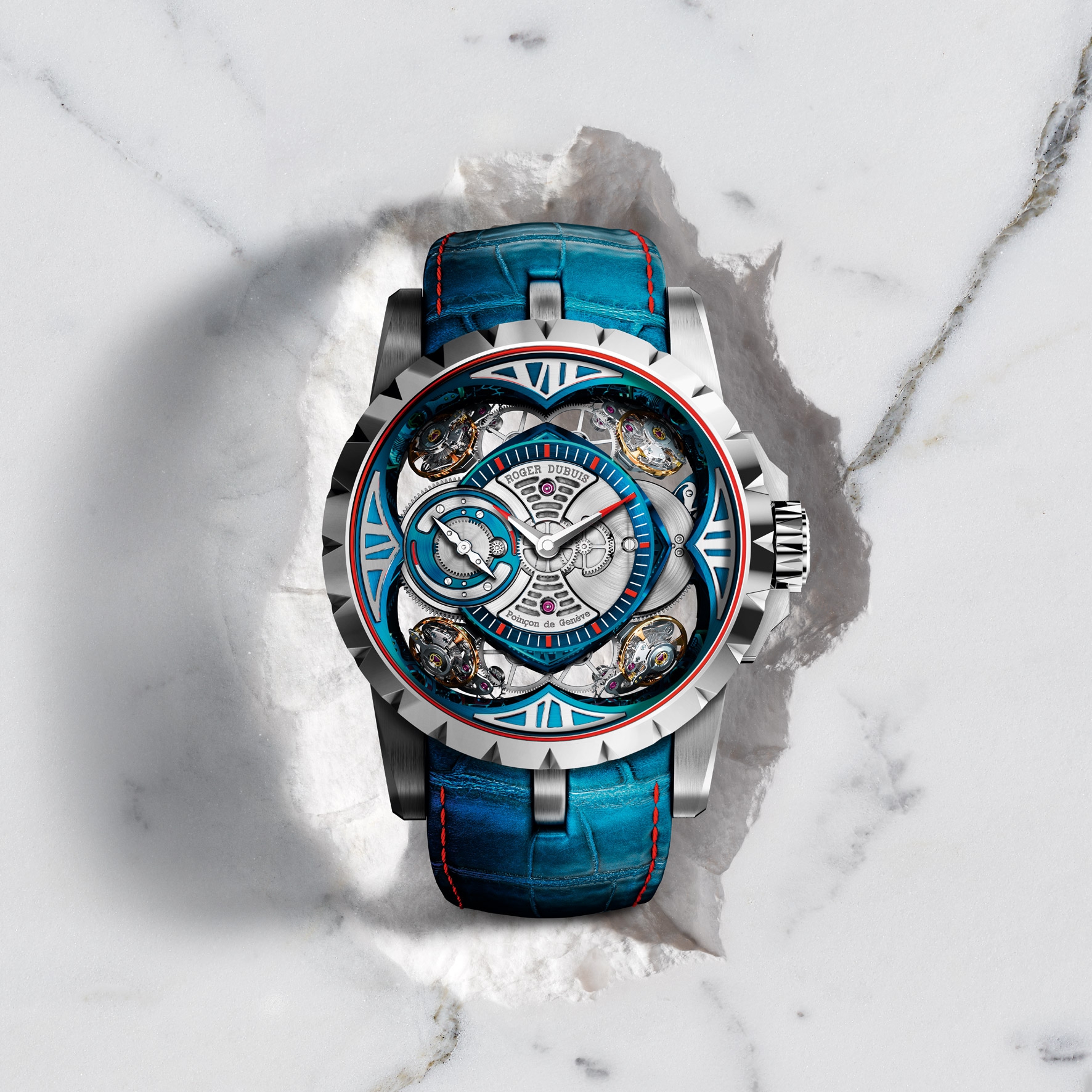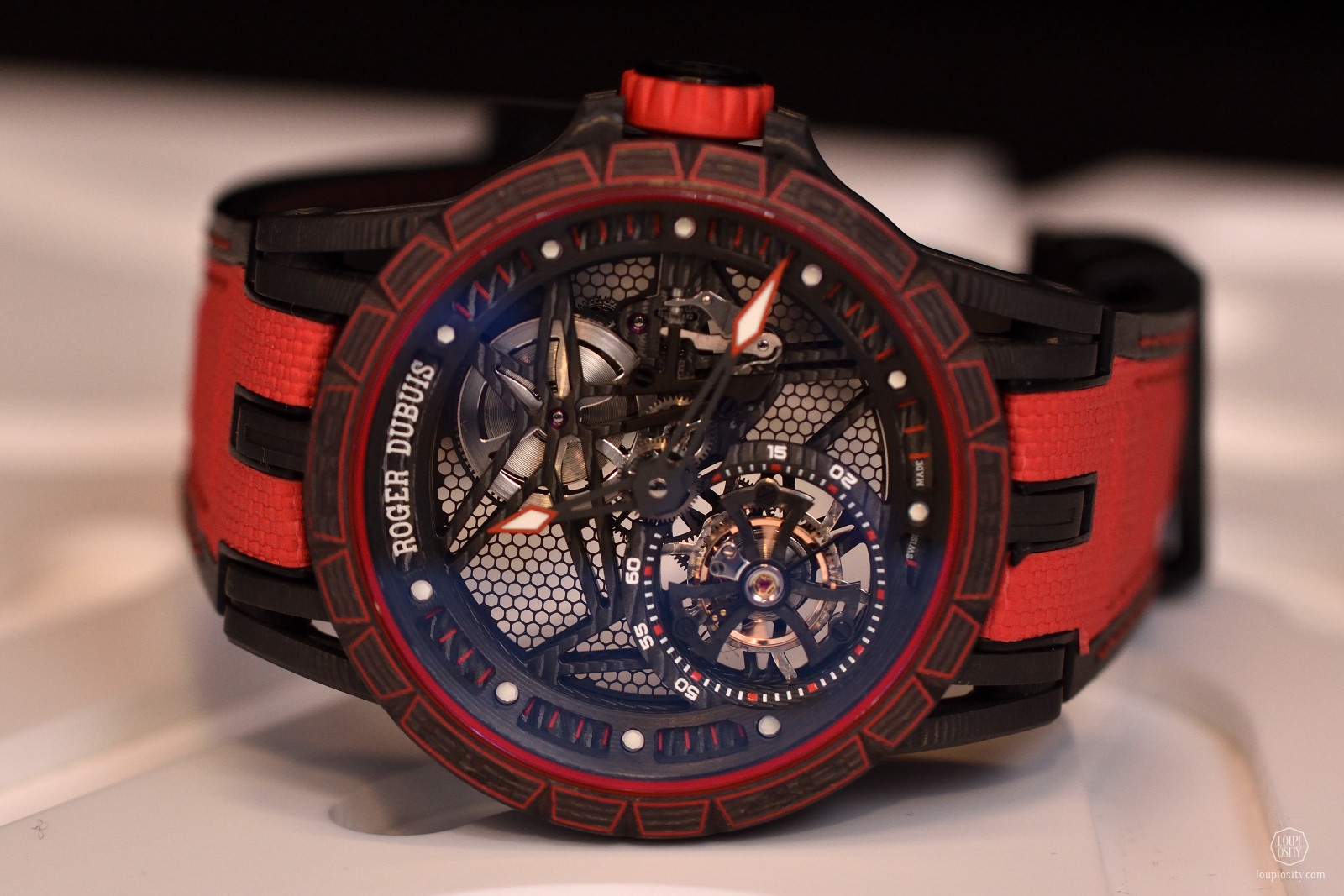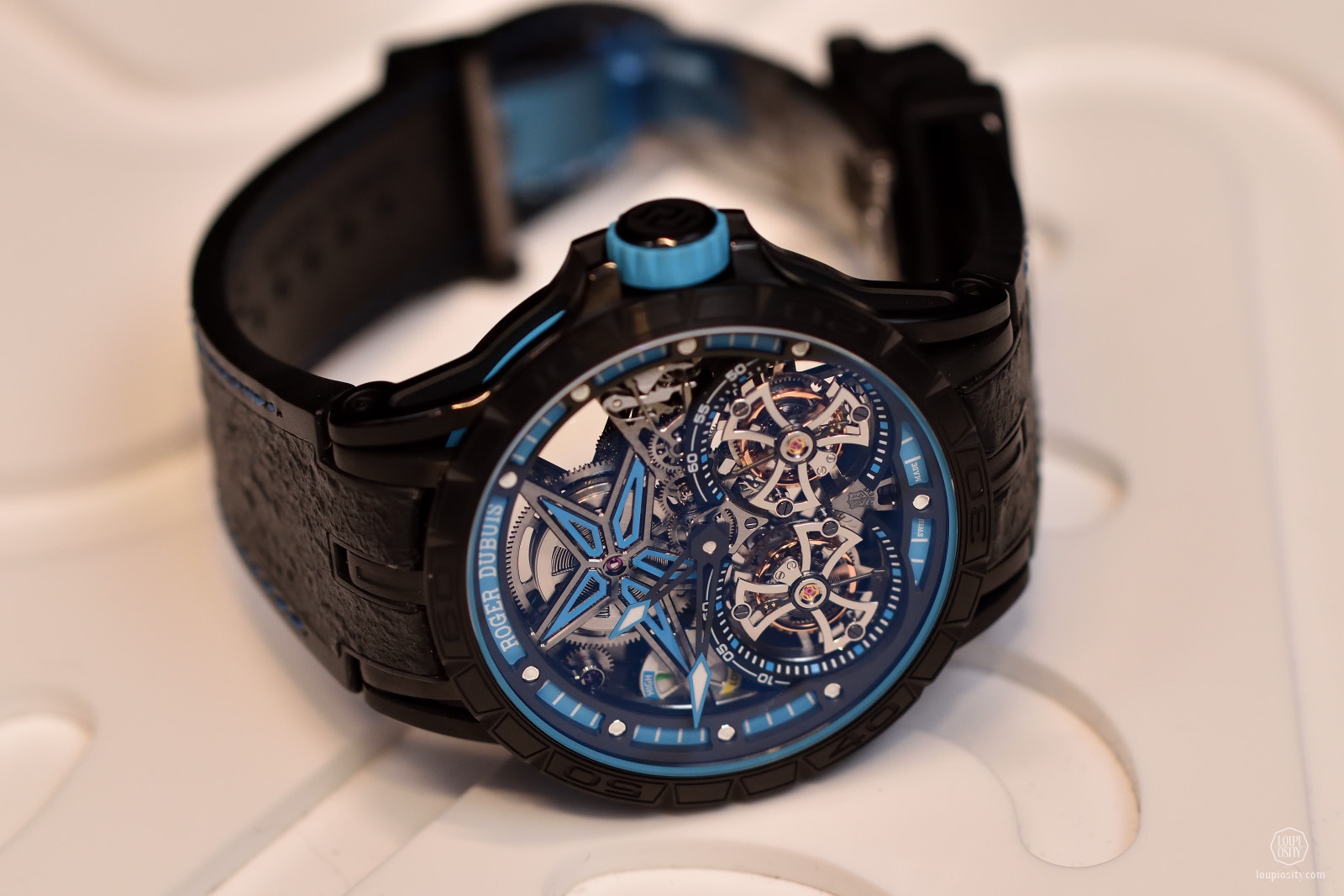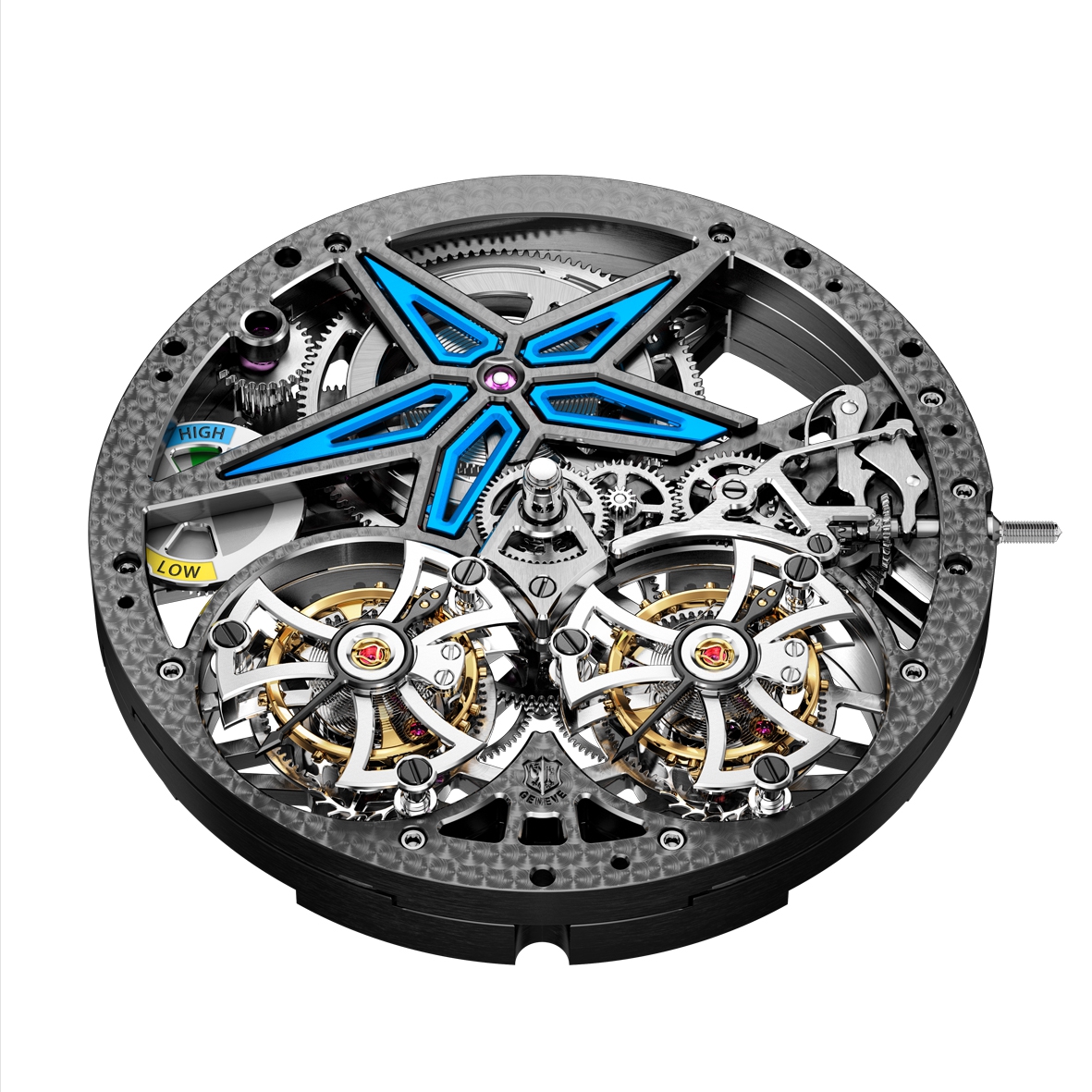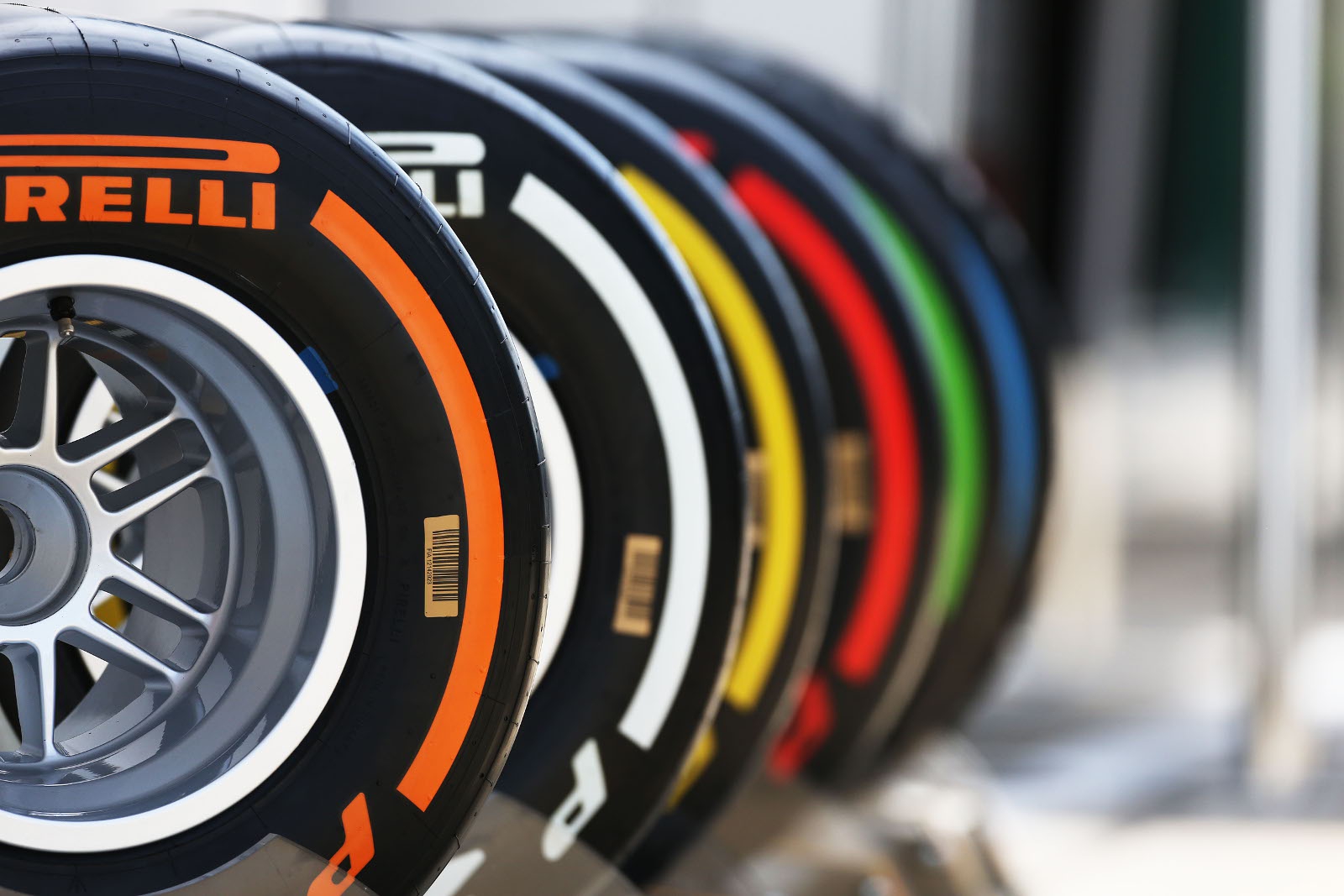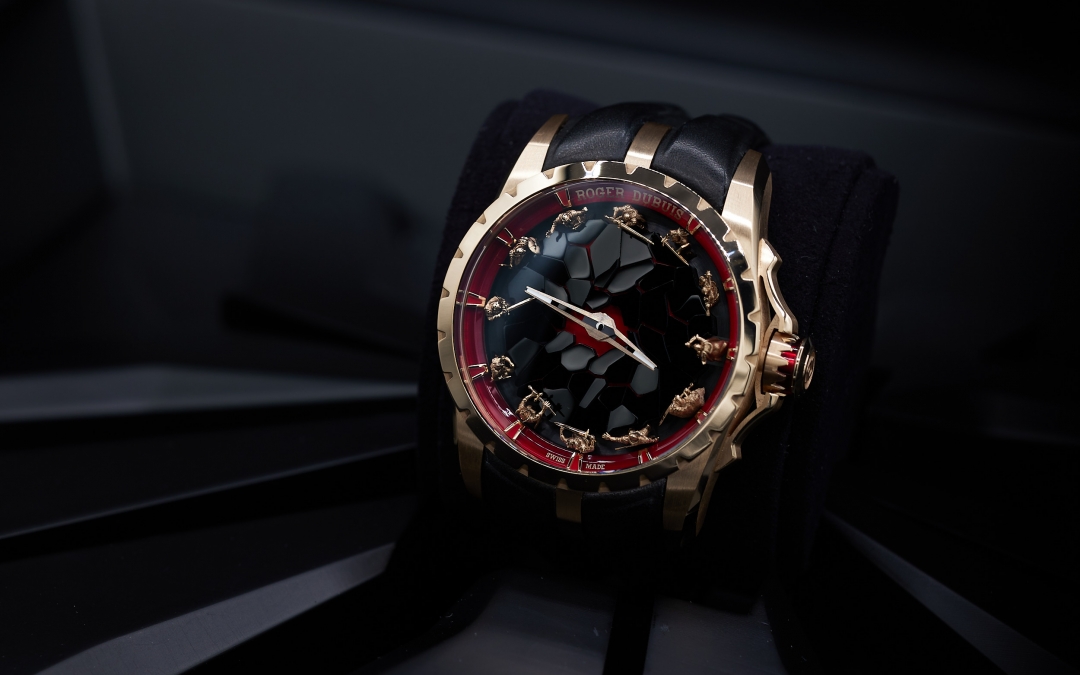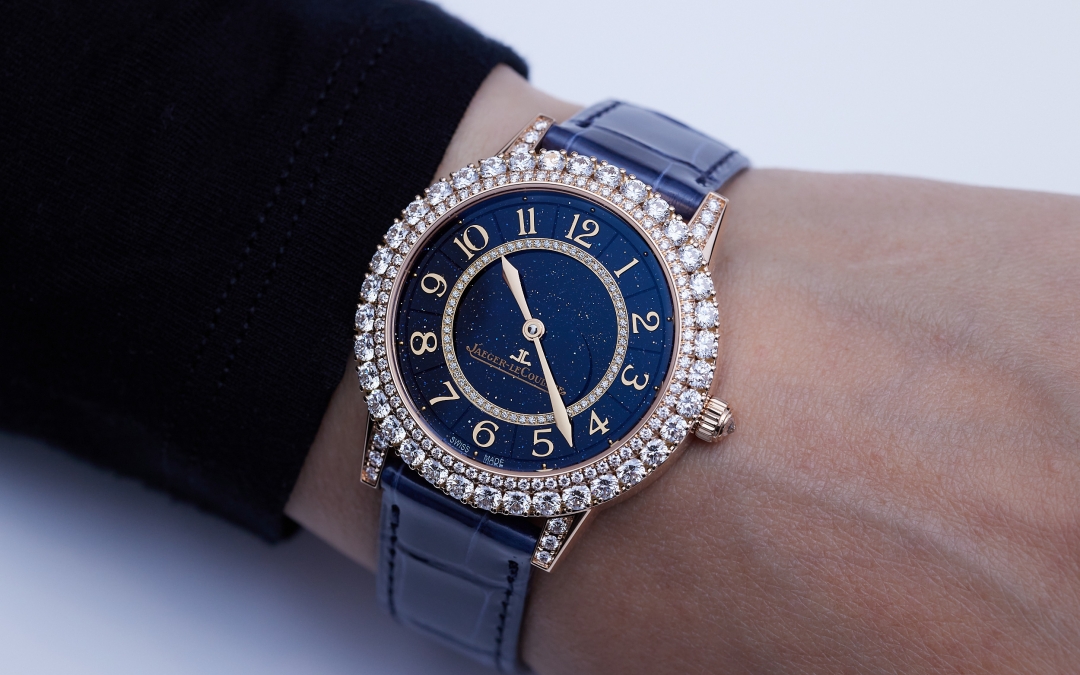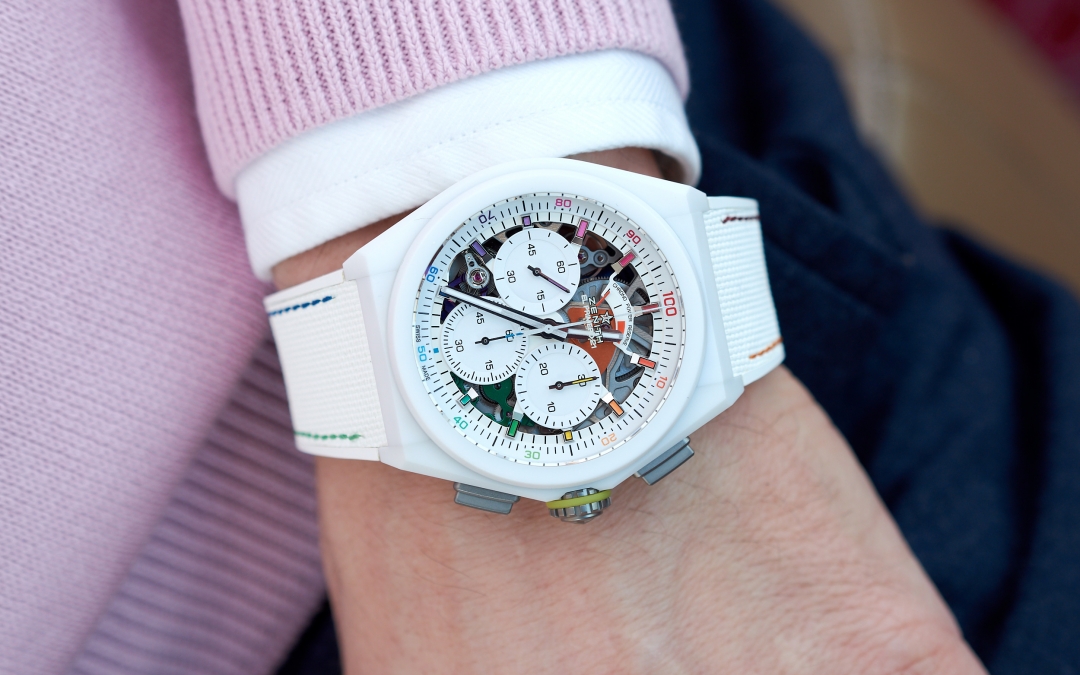The booth of Roger Dubuis was full of edgy dancers in black overalls and helmets at the opening ceremony – introducing the latest road-burning collaboration of the Manufacture – a new alliance with Pirelli.
This year Roger Dubuis focuses on “Disruptive Materials and Progressive Complications”. The Manufacture presented the Excalibur Quatuor Cobalt MicroMelt with the 590-part RD101 Quatuor calibre incorporating four sprung balances and five differentials. This time the case is made of a cobalt chrome alloy. The new metal, produced by using the special Micromelt® technology, has a high resistance to corrosion and it’s known for biocompatibility.
Multi-layered carbon was used for the case of another world premiere, the Excalibur Spider Carbon. What’s more, some parts including the bridges and main plate and even the tourbillon’s cage were made of the same material (T700 carbon fibre). The skeletonized movement has been combined with a honeycomb-patterned plate. The materials and the skeleton architecture results in incredible lightness, which makes very comfortable wearing and more efficiency in terms of energy usage. The power reserve of the RD509SQ movement increased to 70 hours.
“Power is nothing without control”
The alliance between Pirelli and Roger Dubuis is part of the Pirelli Design project and it is planned to continue over a longer period of time.
Pirelli & C. SpA is one of the largest tyre manufacturers in the world. It was founded in 1872 by Giovanni Battista Pirelli in Milan, Italy and the company originally specialised in different rubber products and processes. Today it deals with tyre manufacturing and since 2015 it is owned by ChemChina. The company has been sponsoring sport competitions since 1907. Pirelli is the exclusive tyre supplier for the Formula One Championship for the years 2011–2019 and for the FIM World Superbike Championship, and supports young rally drivers through the FIA Pirelli Star Driver program.
The Pirelli P Zero™ brand was launched in the early 2000s in order to bring the wealth of knowledge gained from competitive motorsport to the roads. The P Zeros™ are the Ultra High Performance shoes for top supercars such as Lamborghinis, Ferraris, Porsches or the Paganis. The Italian blood manifests itself not only in the overwhelming desire for speed, but also in style – watch this video!
Excalibur Spider Pirelli
The Excalibur line is the most emblematic collection of Roger Dubuis, so it’s not surprising that the Pirelli collab started with two new Excalibur models. The Excalibur Spider Pirelli – Double Flying Tourbillon and Excalibur Spider Pirelli – Automatic Skeleton were presented at SIHH 2017 as the first milestone of this partnership. Both are limited – to 8 and to 88 pieces, respectively.
The case is black DLC titanium featuring vulcanised blue rubber details in both. The strap has inlays made of rubber from a set of Pirelli tires that actually competed in F1 and, in fact, won an F1 race last year.
The Double Tourbillon houses the RD105SQ skeletonised movement with a power reserve indicator visible at 9 o’clock, the design of which echoes the racing car fuel gauges. The seconds track is inspired by the speedometers. The Calibre RD820SQ moves the Automatic Skeleton timepiece, which sources energy from the front-facing micro-rotor. Energy for 60 hours is stored on the barrel released by the 4Hz escapement.
Roger Dubuis keeps you in the fast lane; the timepiece comes with a two-day VIP program organised by Pirelli at a motorsport event.
Tiny Tyre Tutorial
When thinking about a car, people get excited about horsepower and designs and usually do not pay too much attention to tyres. However, it well deserves the credit: the car is in contact with the ground (asphalt, concrete, paving stones etc.) through the tyre on the size of a post card (called contact patch). When breaking, accelerating or turning, tyres have to convey these safely to the ground. To support these actions, especially under heavy duty and tough circumstances, tyres have a very complicated construction. They include various materials, different rubber compounds, fabrics and/or steel wires in order to reinforce their structure and stabilise the size.
The special requirements of super and racing cars necessitate the development of special materials. These applied materials are a result of high-tech chemistry: special synthetic rubber compounds and adhesives, Kevlar fibres and fabrics as reinforcement, all of them processed very precisely to fit the given conditions: dry summer weather, humid and tropical conditions or snow and deep frost winter weather, you name it. Materials have to be chosen accordingly. Another key element is the pattern and the surface of the tyre. An enormous amount of physical knowledge and experience is needed to create the most efficient patterns.
The tyres of a Formula 1 car have an underlying nylon and polyester structure in a complicated wave pattern designed to withstand heat shocks and far greater forces than road car tyres. In Formula One racing that means anything up to a tonne of down-force, 4g lateral loadings and 5g longitudinal loadings.
Photo credits: Roger Dubuis, Pirelli, Loupiosity.com.
All registered trademarks are property of their respective owners.
All rights reserved.

